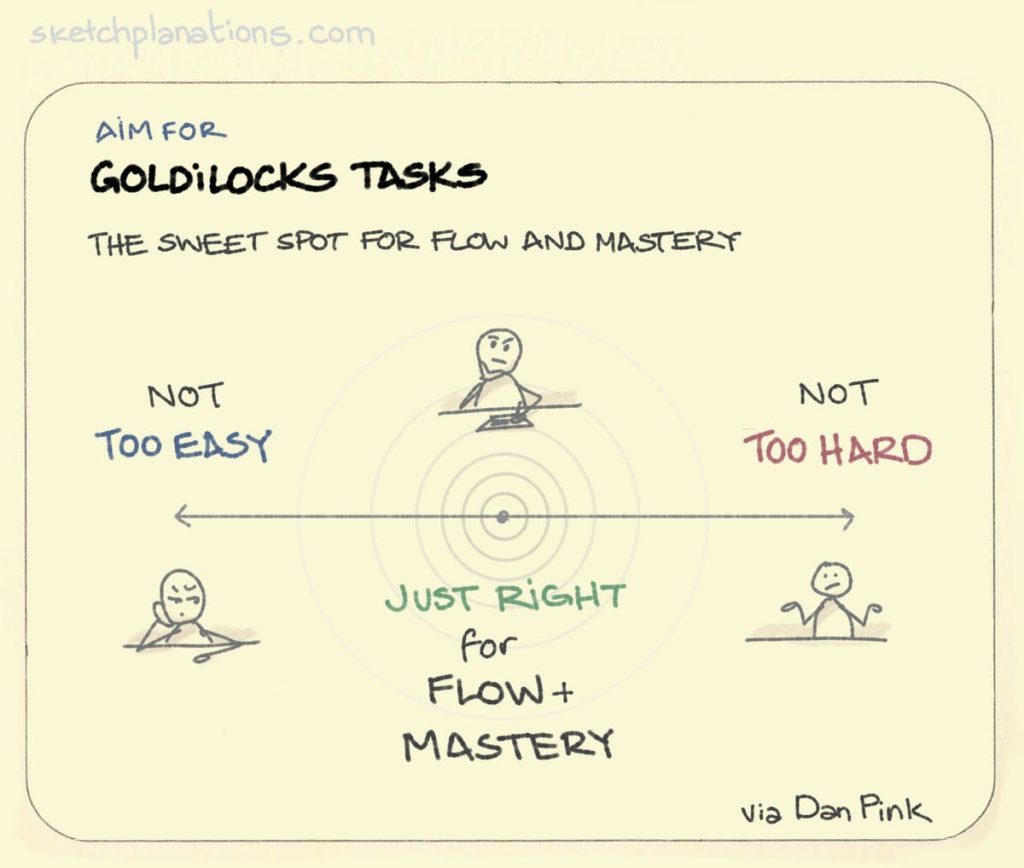Daniel Pink’s book Drive inspired our Hello Frances Podcast series on intrinsic motivation. Pink’s book discusses the motivators of autonomy, mastery, and purpose. Our latest podcast episode on mastery discusses the importance of utilizing goldilocks tasks to move toward greater mastery. Goldilocks tasks are the ones that are neither too easy nor too difficult for your employees. According to Pink, if a task is too easy, employees will grow bored and if it is too difficult, an individual will become frustrated or anxious. So how do we keep satisfied employees? By making goldilocks tasks a priority in the workplace.
Allow your employees to choose their tasks.
As we talked about in our podcast on autonomy, giving your team members freedom in the workplace will lead to happier, valued employees, lowering turnover, and increasing your organization’s retention rate. Individuals that have a choice in their work and the skills that they are seeking to master will be happier with their position. Giving employees the time and energy to work on projects that they are excited about will allow them input to choose tasks that are not too challenging and not too easy - tasks that are just right for them.
Talk to your employees about the skills they want to improve.
According to James Clear, the author of Atomic Habits, “The human brain loves a challenge, but only if it is within an optimal zone of difficulty.” When leaders talk to their team members about what they want to work on, employees will feel that they can share their outlook on tasks, whether they are too easy, too hard, or the perfect fit. Open communication with team members ensures that they feel supported when taking on difficult tasks. Candid conversations are the only way to guarantee your employees are challenged, growing in their position, and happy with their trajectory in the workplace.
Individualize your approach.
A goldilocks task for one individual will not be a goldilocks task for another. Make sure that you take an individualized approach with your team members to ensure you give the appropriate tasks to each person. Tailoring your method of leading will help when assigning the perfect tasks to the most appropriate member of your team. We know a one-size-fits-all approach rarely excels in the workplace and when dealing with goldilocks tasks are no different.
James Clear said it best “The Goldilocks Rule states that humans experience peak motivation when working on tasks that are right on the edge of their current abilities. Not too hard. Not too easy. Just right.” Does your organization prioritize these learning opportunities for employees? What results have you seen from goldilocks tasks? We’d love to hear your perspective. Send us at
he***@fr********.com
to chat!

